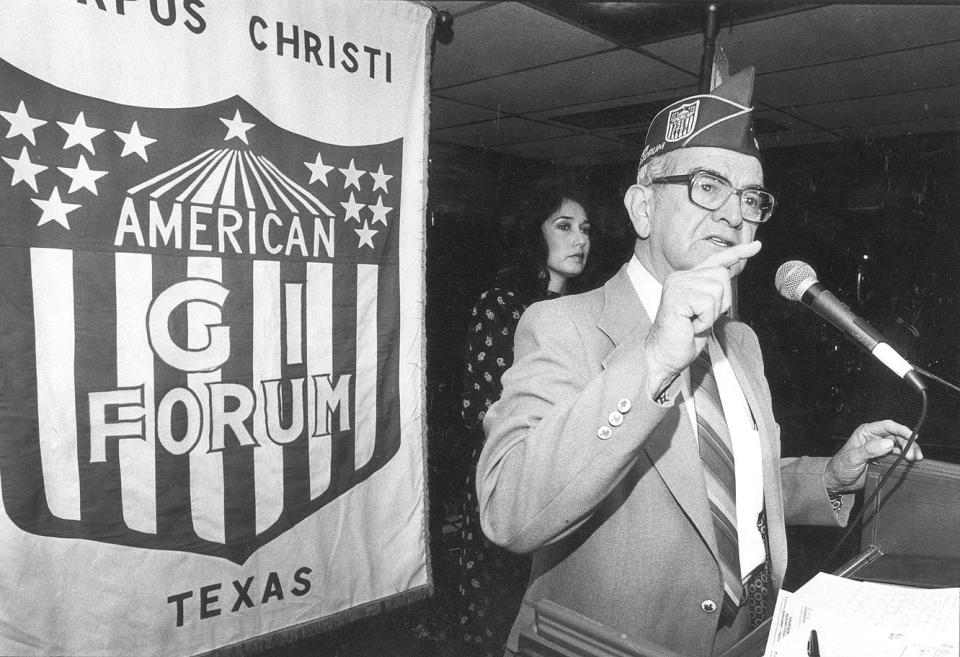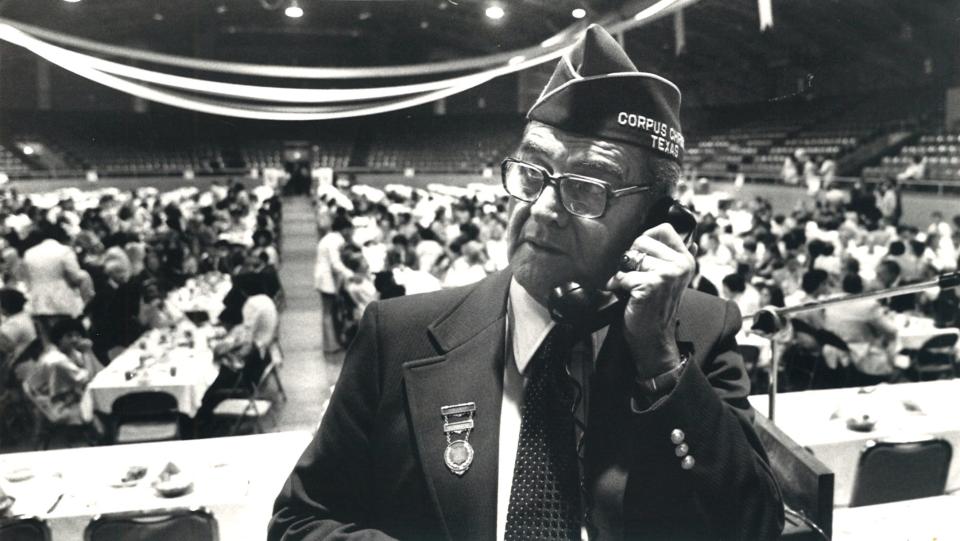Texas Education Agency outlines South Texas figures in new reading textbooks
Directed by the Texas Legislature to create reading and math textbooks for Texas schools, the Texas Education Agency has unveiled materials that highlight South Texas history.
Last week, the TEA unveiled new Texas Open Education Resources textbooks. On Friday, TEA Commissioner Mike Morath visited Corpus Christi to highlight parts of the materials that reference veteran and civil rights icon Dr. Hector P. Garcia, jazz musician James Polk and Driscoll Children's Hospital founder Clara Driscoll.
Texas Rep. Todd Hunter, who represents Aransas and part of Nueces counties, praised the inclusion of South Texas history in the reading materials.
"It's been too long, but it's never too late," Hunter said.

In 2023, House Bill 1605 directed the TEA to develop a set of state-owned instructional materials specifically designed to support student learning and close achievement gaps. These "open" textbooks will be owned by the state and available free to anyone.
The State Board of Education is currently tasked with reviewing high-quality instructional materials, including the Open Education Resources, as well as 142 products submitted by 25 other publishers. In addition to a professional review process, the public has the opportunity to review the materials and submit feedback through Aug. 16.
The state board will hold public hearings June 25-28 and Sept. 10-13. The public can also access materials and give feedback online at https://sboe.texas.gov/state-board-of-education/imra.
Schools would not be required to use the state-approved lessons.
School systems that purchase approved "high-quality instructional materials" will receive $40 per student per year from the state. School systems that use the Texas OER textbooks can also get $20 per student to cover printing costs. Anyone will be able to download an OER textbook for free.
Morath, who leads the Texas Education Agency, said that there is a correlation in Texas between the schools with the lowest percentages of poverty and the best reading performance.
"You can see quite clearly the higher the density of poverty in the school, the lower the level of reading proficiency," Morath said. "What you can also see though is that there are very clear outliers. Demography is not destiny."
Morath said that curriculum is one of the pieces that can help improve student performance. To improve reading performance, students need to learn phonics and they need to be exposed to complex vocabulary, Morath said.
A student needs to learn how to sound out a word, but they also have to know what that word means, he said.
For the past several years, the state has been piloting elementary reading instructional material that includes this approach in school districts like Temple ISD and Lubbock ISD.
Morath said that Lubbock ISD saw a jump in reading performance, including a "disproportionate benefit" for low-income students and Black and Hispanic students, groups that have historically had lower levels of reading performance.
The Texas Tribune and The 74 have reported that the potential new TEA-developed educational materials include lessons that reference Biblical stories.
The kindergarten OER units include lessons on nursery rhymes, the five senses, fairy tales and folk tales, plants and how they grow, farms, weather, art, serving neighbors and the community and historical topics like colonial and Native Americans, kings and queens and American symbols and historical figures.
First grade materials cover astronomy, animals and habitats, the human body, stories from across the world, American westward expansion, American independence and Aztec, Maya and Inca civilizations.
Second graders learn about ancient Greeks, the War of 1812, cycles in nature, insects, the U.S. Civil War, nutrition, aviation, American immigration and people who fought for civil rights.
Third graders learn about animal classification, classic tales, the human body, ancient Rome, light and sound, astronomy, Native American cultures, early explorations of America, colonial America and jazz.
Fourth graders learn about reading personal narratives, the art of invention, contemporary fiction, the Middle Ages, the American Revolution, poetry, geology, industry in energy and the novel "Number the Stars."
Fifth graders learn about personal narratives, the Renaissance, early American civilizations, the novel "Don Quixote", poetry, William Shakespeare's "A Midsummer Night's Dream", World War II, chemical matter, Juneteenth and the novel "The Lion, the Witch and the Wardrobe."
The second grade "Fighting for a Cause" unit includes lessons focused on Dr. Hector P. Garcia. The unit also includes non-violence, the Biblical figure Esther, William Penn, William Wilberforce, Rosa Parks, abolitionists, the civil rights movement, Martin Luther King, Jr., Cesar Chavez and Dolores Huerta, Jackie Robinson, Sierra Leonean engineer Kelvin Doe and young Americans who have advocated for bees and butterflies.
The Garcia lesson highlights Garcia's history as a doctor, soldier and a leader who advocated for education, veterans and people in need of medical care. The American GI Forum is mentioned, as is Garcia's efforts to ensure Private Felix Longoria was honored with a burial in Arlington National Cemetery.

"This is a story that Texans will know because we've embedded it in statewide curriculum," Morath said.
Cecilia Garcia Akers, Dr. Hector P. Garcia's daughter, has been advocating for her father's legacy for years. Garcia has appeared in Texas history textbooks for close to 15 years, but in 2021, a bill was proposed in the Texas Legislature that would have removed Garcia and other Hispanic and Black figures from the mandatory history curriculum.
The move was unsuccessful, and three years later, Garcia Akers is proud to see her father centered in a state-designed curriculum.
"We cannot close our eyes to what's going on," she said.
James Polk, a native of Corpus Christi, was a renowned jazz musician. A third grade unit on jazz covers Polk.
"We need to make sure children are reading interesting material ... that has challenging material," Morath said. "This is how we will grow our children in reading comprehension and knowledge of the world around them. They need to read about our history, the things we are proud of and the things that we have overcome."
A kindergarten unit on ethics also mentions the Naval Air Station Corpus Christi in a lesson on military service.
For fourth graders, the lessons include personal narratives, including one by Clara Driscoll. Driscoll grew up in the Corpus Christi area and is known as the "Savior of the Alamo" for her role in protecting the historic site.
Materials are also available in Spanish to support dual language and bilingual learners.
If approved, the materials will be available for teachers and students in 2025-26.
Del Mar College radiologic technology program trains students for growing field
Flint Hills Resources owes nearly $1 million in penalties for Christmas Eve 2022 oil spill
Where kids can get free lunch this summer
This article originally appeared on Corpus Christi Caller Times: Pending approval, new open Texas textbooks feature South Texas icons

